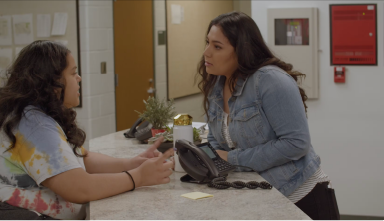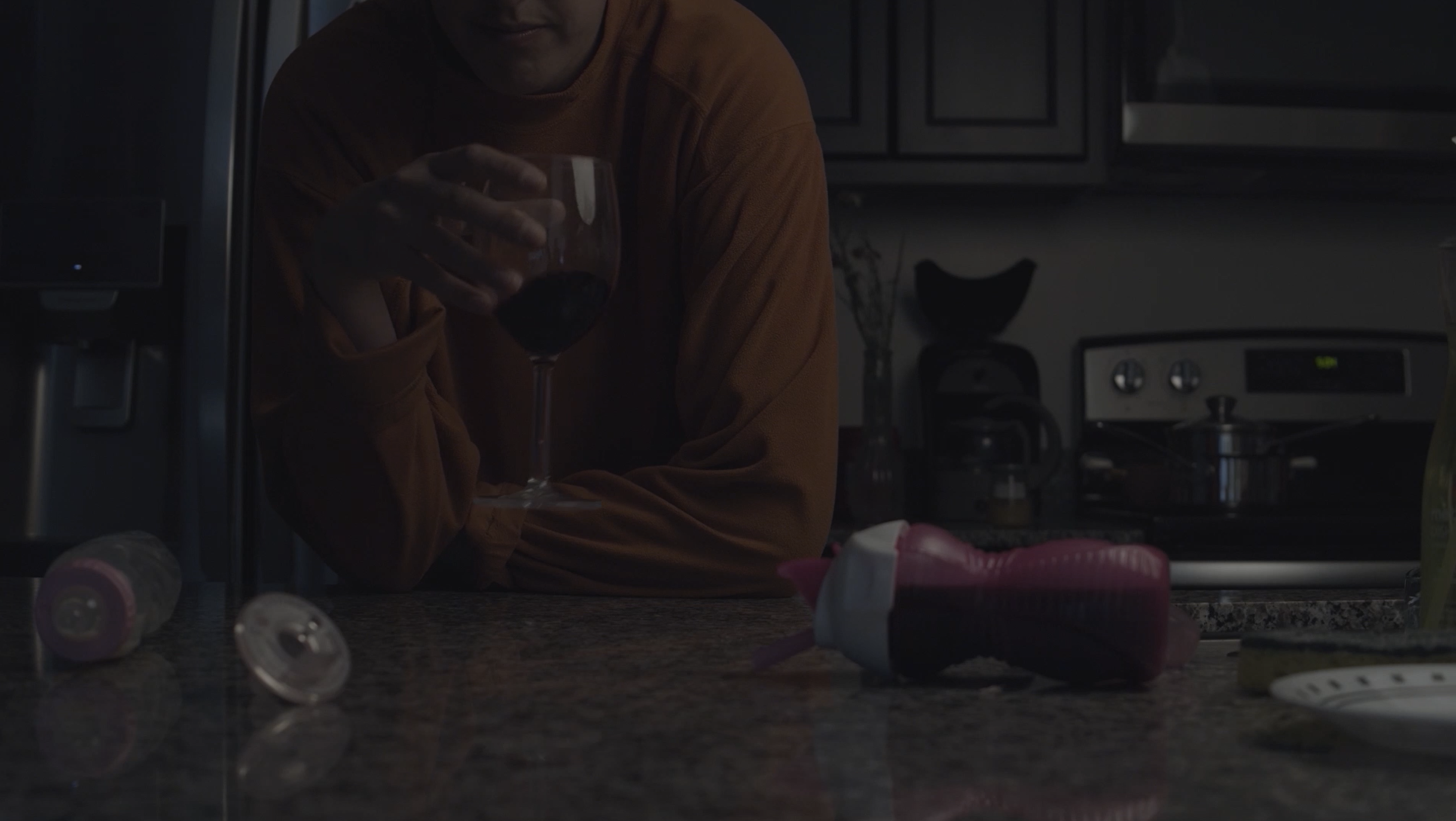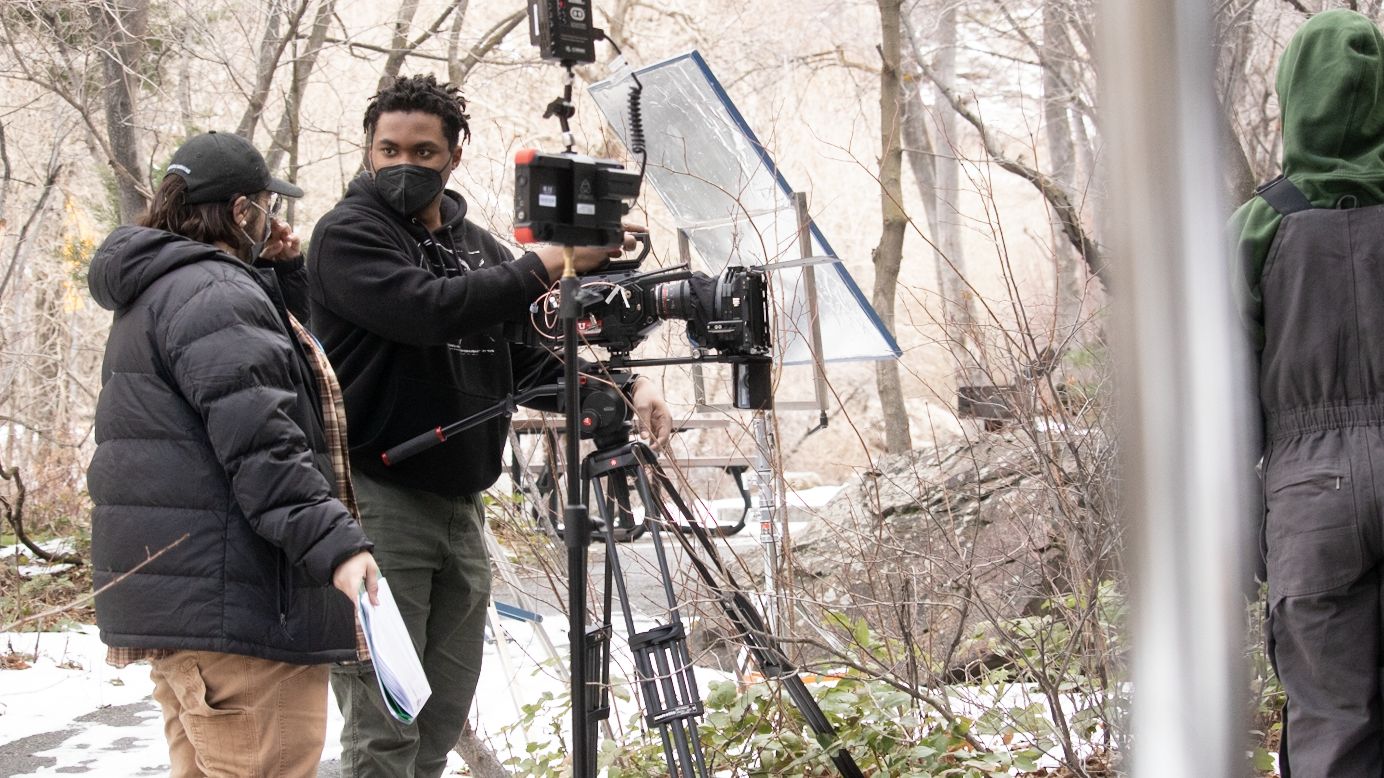Theatre student Ash Goodwin in the Babcock Theatre with her service dog, Juno. (Photo: Todd Collins)
WRITTEN BY MARINA GOMBERG

University of Utah College of Fine Arts students working to make their disciplines more equitable, inclusive, and accessible carry equal parts hope and responsibility.
When you speak with them, you can feel the fire of a generation armed with information and visions of deeper senses of belonging. The heat makes it abundantly clear just how seriously committed they are to making real change.
There are students across the entire college doing this work on micro and macro levels, organized and individual. We had the chance to speak with some from the Departments of Film & Media Arts and Theatre.
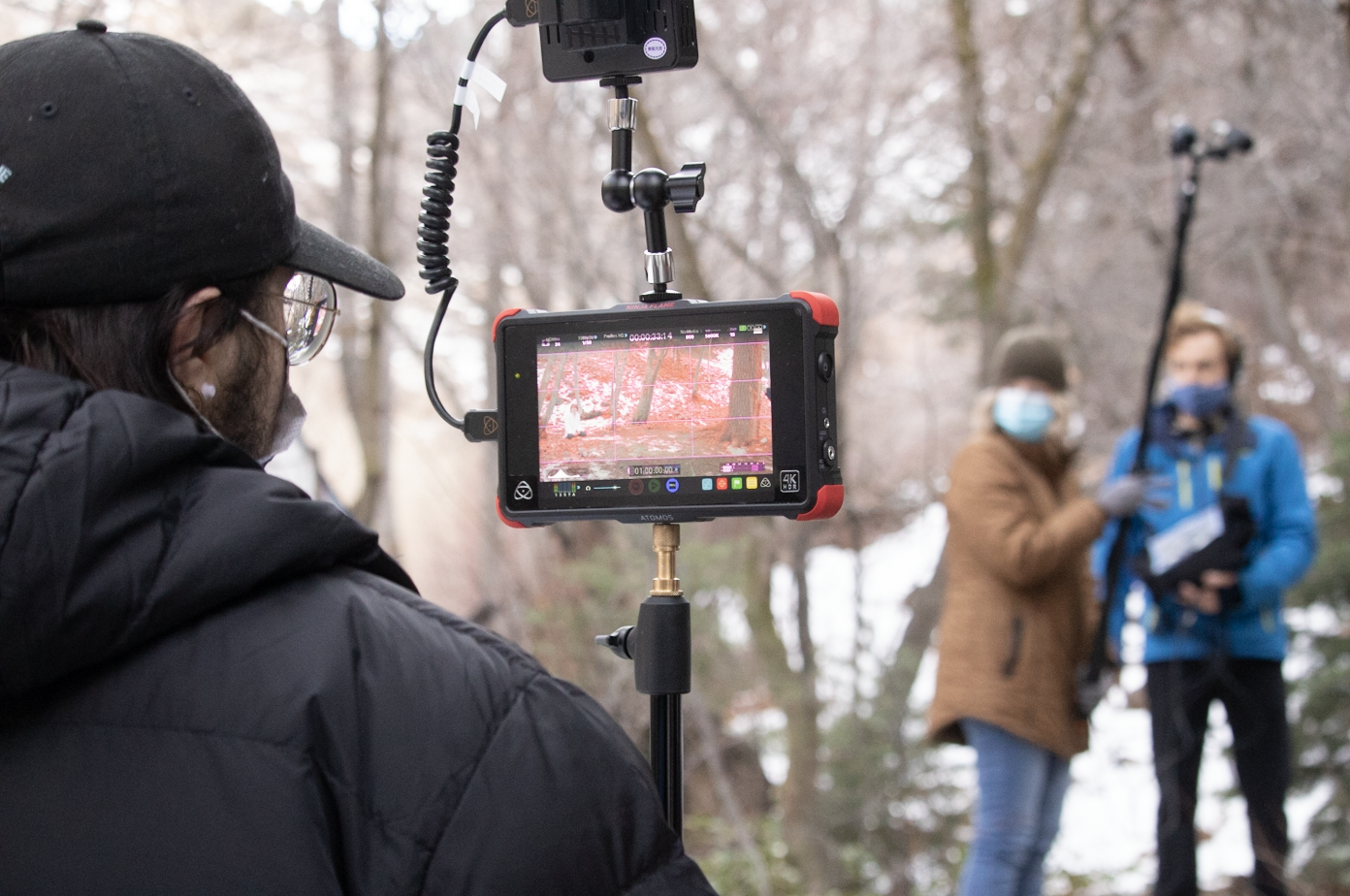
Behind the scenes on Abe Francis’ film shoot
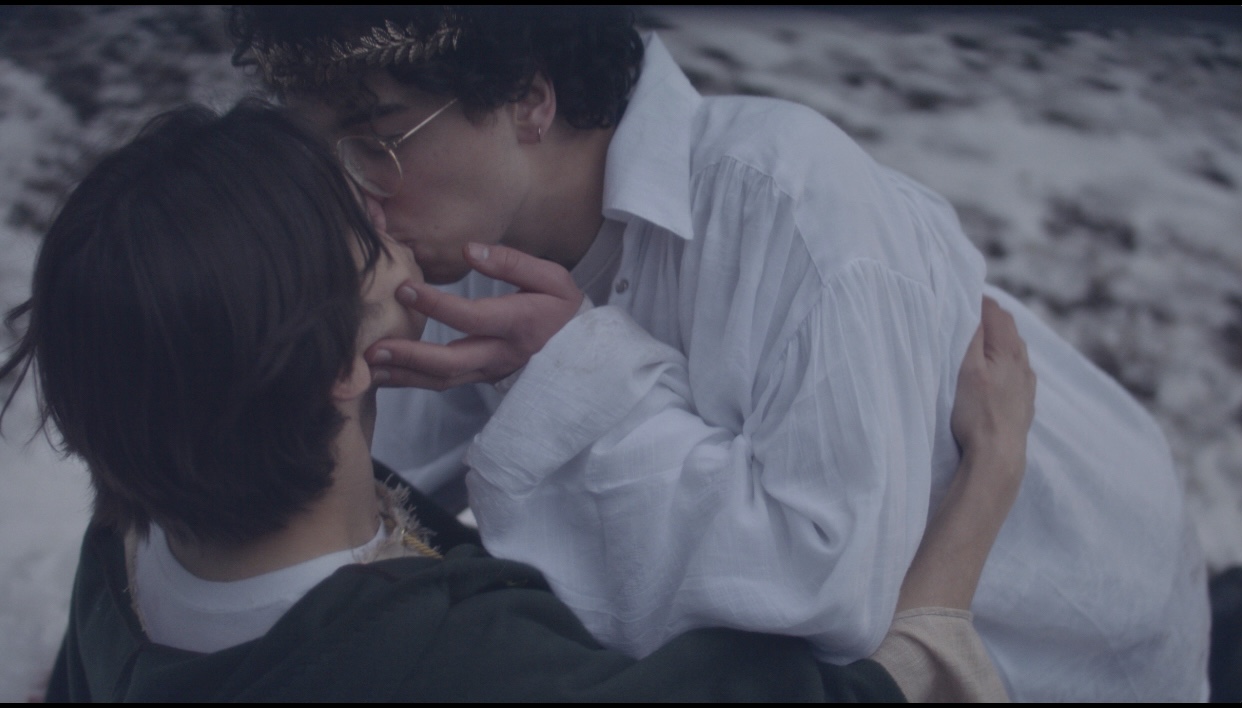
Still from Abe Francis’ film
“We are the future,” T Pullen, senior in Theatre’s Musical Theatre Program said, acknowledging it’s their paths they are clearing with this important work.
Pullen is particularly focused on inclusion and representation as they relate to gender identity and gender expansiveness. Having been in the program now for some time, Pullen has seen incredible progress among both the students and the faculty in the awareness, acceptance, and inclusion of identities that might differ from our traditional binary notions of gender. That shift has been a profoundly positive one, they say, that allows everyone to be their authentic selves.
Seeing representations of their identities on stages and screens is a driver for other students in the college, as well, many who grew up not seeing their histories, cultures, or stories reflected back at them from the media they would consume.
“I was inspired to work toward bringing diversity into film because I grew up seeing none of it,” said Abraham Francis, third year film production major. “If I saw a version of Legolas as a transgender man as a child, I would not have been nearly as afraid to come out and live as myself.”
Film & Media Arts student and 2022 Outstanding Senior Yein Ji takes on this responsibility as well. As she works on films, she poses certain questions to herself.
“It can be hard to notice the lack of diversity, but that’s the first step,” she said. “The next movie you watch, song you listen to, media you consume, think of the representation. Is this character a stereotype? Is it inclusive? Are people of color strategically placed just to check the diversity box? Is this character’s sexuality their main purpose in the media?”
In fact, several of these students are using their personal experiences to inform what art they make and even how they go about making it.
“What I say, the tools I bring to the table, the way I interact with people are all a part of breaking production norms within the arts,” Film & Media Arts MFA alum Jordan Boge said. “It’s less about what art I am making, and more about the power I reclaim as I enter spaces. What I say and do in my everyday work is a means of tangible change. The everyday decisions I make to be more equitable add up and are a way I am in constant pursuit of abolishing oppressive systems.”
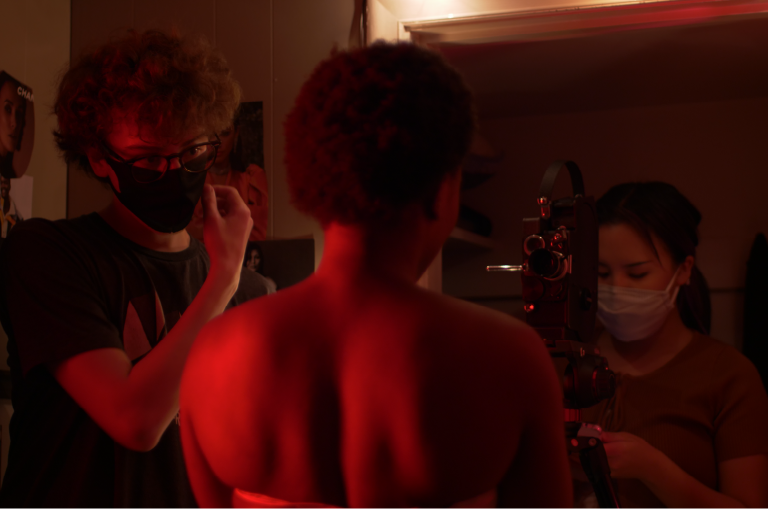
Yein Ji (right) checks the exposure of the room before filming the shot with Cayden Turnbow (left) who is directing Deborah Ingabile (middle). (Photo: Leila Salari)
Theatre teaching student Ash Goodwin spent over 250 hours researching disabilities in theatre as she wrote and produced the play, “The Not Broken Monologues” which explored the disabled experience through a lens of grief and acceptance. She joined the department’s Justice, Equity, Diversity, and Inclusion (JEDI) committee to bring the perspective and voice of students with disabilities.
For Goodwin, access to learning about the arts is as important as the arts themselves. While some may have felt disconnected from their learning environments during the pandemic, for example, Goodwin noted how remote learning actually leveled the playing field for all students. It’s her hope that online lectures and other pieces of remote learning will remain in play even after their public safety necessity might not persist.
“The nature of theatre and live art is to be flexible and adaptive,” Goodwin said. “We have the tools necessary for our profession and we just need to put them into practice when it comes to people as well.”
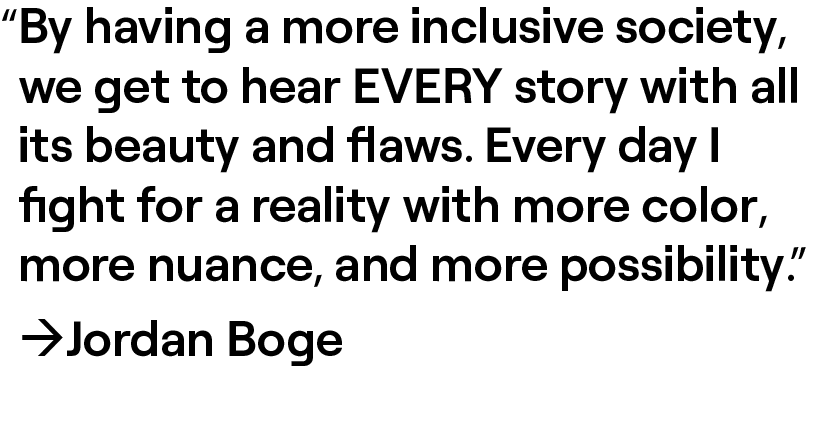
Aathaven Tharmarajah, a senior in the musical theatre program, agrees and sees this work as a matter of necessity. He had sat on the college-wide JEDI Committee before joining the department’s, and has brought a critical eye toward racial equity and representation in the arts. He described the last several years of work in this realm as a rollercoaster, but is excited by what he sees as progress in academia that has outpaced that of the professional world.
“We often look up to the professional world, Broadway for example, when we’re really the ones bringing the change,” he said. “As we look to address these challenges, we shouldn’t look anywhere but within ourselves.” ▪


